Learn about the most common types of legal documents and get FREE legal transcription examples and templates.
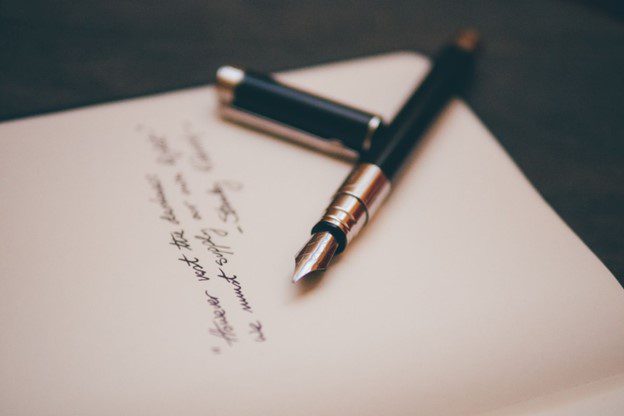
When it comes to legal transcription, it doesn’t make sense to open up a fresh Microsoft Word document and start typing from scratch each time. That’s why professionals often work from legal transcript templates. This can be a big time saver – especially if you’re working on a complex document that requires special formatting.
In this post, we’ll explain the most common types of legal documents and offer legal transcription examples for each one. Be sure to read from top to bottom—you won’t want to miss out on all of the resources we have to help you simplify your workflow (including FREE legal transcript templates).
What is Legal Transcription?
Legal transcription is the process of converting recorded speech at legal proceedings into a written or electronic document. This can include court hearings, depositions, client meetings, and more.
But not all kinds of proceedings require the same formatting. For example, while some legal transcripts tend to have fewer rules regarding structure (like client letters), others have particular formatting requirements (like pleadings) that must be followed to the letter.
While legal transcription might sound like a daunting task, it doesn’t have to be complicated—especially if you have the right tools at your disposal.
What are the types of legal transcription?
Let’s take a look at some of the different types of legal documents you may encounter. Here are the most popular legal transcription examples.
Depositions
A deposition is an oral statement by a witness or party to a legal proceeding recorded outside of a courtroom. Depositions are often transcribed verbatim, meaning every “um” and “ah” is captured in the transcript. This level of detail is crucial because it allows attorneys to review what was said for any possible contradictions, omissions, or other legalities.
Dictations
Dictations are recordings made by legal professionals, often attorneys, for the purposes of document creation. Dictations can be used to dictate legal briefs, client letters, and other legal documents. When transcribed, dictations provide a written record that can be used as a reference or shared with others. These are typically proofread and edited for clarity.
Interrogations
Interrogations are interviews conducted by law enforcement officials with suspects, witnesses, or other parties to a legal case. The interrogation transcript is used as evidence in court proceedings. This type of legal transcription requires a high degree of accuracy and attention to detail, as even minor discrepancies can have a major impact on the outcome of a legal case.
Memorandums
Memorandums of interviews are legal documents that memorialize the statements made by witnesses or parties to a legal proceeding. These transcriptions are used to refresh memories, prepare for legal proceedings, and create a written record of what was said.
Pleadings
Pleadings are legal documents needed early in a lawsuit. They declare official claims and defenses for plaintiffs and defendants. Pleadings can be transcribed from an audio file or video, so many attorneys take advantage of experienced legal transcriptionists to save time on typing these documents themselves.
Wiretaps
Wiretaps are legal recordings of telephone conversations made by law enforcement officials. These recordings are often transcribed and used as evidence in court proceedings. Even the smallest details can matter a great deal when it comes to transcribing wiretaps, so legal transcriptionists will record each and every utterance.
What are the essential components of a professional legal transcription?
Your legal transcription should be as close to 100% accurate as possible.
This level of accuracy can only be achieved with the help of an experienced legal transcriptionist. In addition to accuracy, professional legal transcriptionists can provide polished formatting and skilled proofreading to ensure your document is ready to use.
Some legal transcriptions include body language, background noise, utterances, and false starts when necessary.
For example, interrogations or wiretaps require verbatim transcription—including all the ums, uhs, and filler words. In contrast, dictations are better suited for intelligent transcription, where the document is edited for clarity. Legal transcription should also note motions like nodding or document high background noise levels in some cases.
Depending on the type of transcription, your document may include names, timestamps, or question-and-answer blocks.
When creating transcriptions with multiple speakers, such as depositions or meetings, legal transcriptionists may note the names of each person who speaks and the time stamps for when they spoke. Special formatting like Q&A blocks may apply as well. This helps attorneys review specific sections of the recording with ease.
Formatted and ready to use.
Once a legal transcription is complete, it should be formatted for you and ready for immediate use. Some states have strict formatting requirements for legal documents, including margin sizes and the number of lines allowed on a page. Professional legal transcriptionists will ensure that your document meets all the necessary requirements so you don’t have to spend any time editing.
3 Excellent Legal Transcription Examples
So what exactly does a professionally formatted legal transcription example look like? We’ve got three stand-out legal transcription samples for you right here.
Legal Pleadings
The basics:
Formatting transcriptions for legal pleadings may look slightly different depending on state requirements, as some states have strict formatting guidelines—others have no guidelines at all. This may include numbered lines, special headers and footers, and precise margin sizes.
You can see an example pleading document from the state of California here. In this case, the document follows the state of California’s legal requirements for formatting, which makes it easier to read and mark important information.
Don’t make this mistake:
One of the most common mistakes people make when typing legal pleadings is not including enough information. This can be anything from failing to list the names and addresses of all parties involved to forgetting to date the document. While it may seem like a small mistake, omitting even the smallest detail could result in your entire pleading being rejected by the court.
Depositions & Transcript Summaries
The basics:
Depositions are legal proceedings where attorneys question witnesses under oath. These questions and answers must be transcribed, often verbatim, for use in future legal proceedings.
A typical deposition transcription will look like this example, in which a defendant gives his defense statement to an attorney. You’ll notice this verbatim transcript hasn’t been edited much—it sounds authentic and includes false starts, utterances like “uh-huh,” and even stutters.
Don’t make this mistake:
Transcribing depositions can be tricky, as the speakers are often nervous and may stutter or start their sentences over unexpectedly. In these cases, it’s essential to include all the verbal tics and fillers in your transcription so that nothing is left out or misinterpreted.
Letters & Memorandums
The basics:
Letters and memorandums are typically not as formal as other legal pleadings or proceedings. However, they still need to be accurate and well-formatted.
Here’s an example of a legal letter from a law firm to a client. You’ll notice this document is shorter than the others and doesn’t follow the same strict formatting rules. It’s been edited for clarity and conciseness without construing the underlying meaning.
Don’t make this mistake:
One of the most common mistakes people make when typing legal letters and memorandums is not proofreading their work. While these documents may not be as long or formal as others, they still need to be free of typos or errors. A single mistake could change the meaning of your entire document, so it’s important to take the time to proofread before sending anything out.
4 Downloadable Legal Transcript Templates To Streamline Your Workflow
For attorneys, making sure your documents are formatted and ready to use in legal proceedings can be time-consuming. So to save you some time, we’ve created four legal transcription templates you can download and use for your convenience.
Every Legal Transcript Template Needs These 5 Elements:
- Simple font pitch and style
- Examples of the spacing and indentation needed
- Examples of the correct justification and headings
- Examples of how numbered/lettered paragraphs and bullet points should be formatted
- Example spaces for information like date, recipient, address, salutations, body text, and closings.
FREE Legal Transcript Templates You Can Start Using Right Now
Numbered Lines for Interview Template
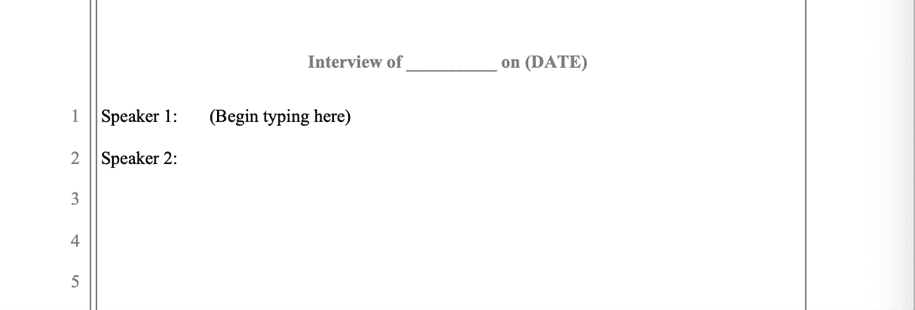
Use this template for legal interviews, whether over the phone or in person. This legal interview transcript template has numbered lines and space to note down the time each answer was given if necessary.
Legal Letter Template
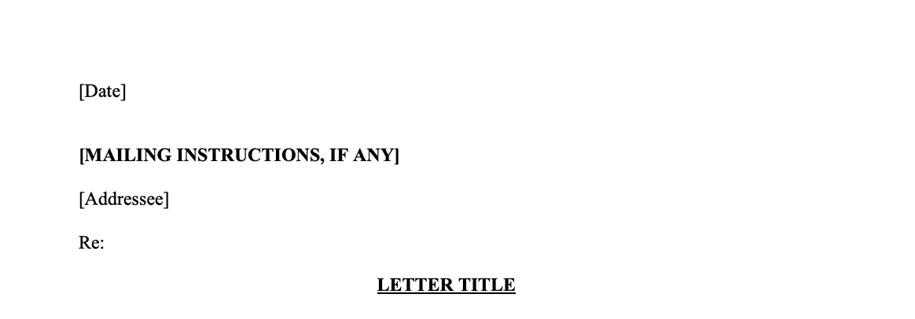
This template can be used for client letters and other short documents. Simply dictate what you need to say, and your transcriptionist will deliver it to you in this professionally formatted legal transcript template.
Legal Memo Template
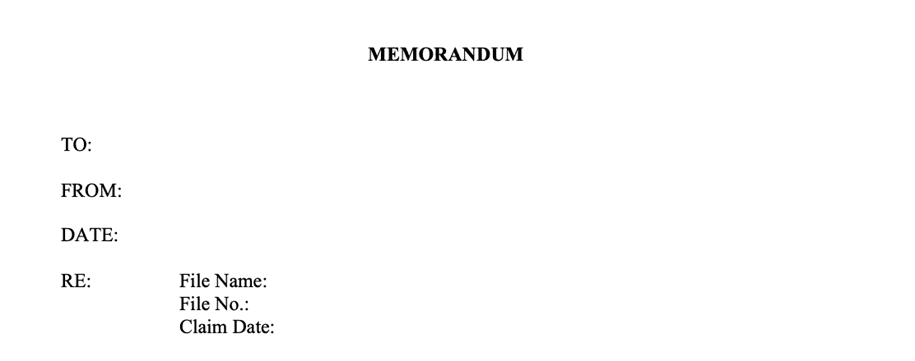
This template is perfect for legal memos from you to your team or from one attorney to another. It includes all the basic formatting for a legal memo and can be customized as needed.
Legal Pleading Template
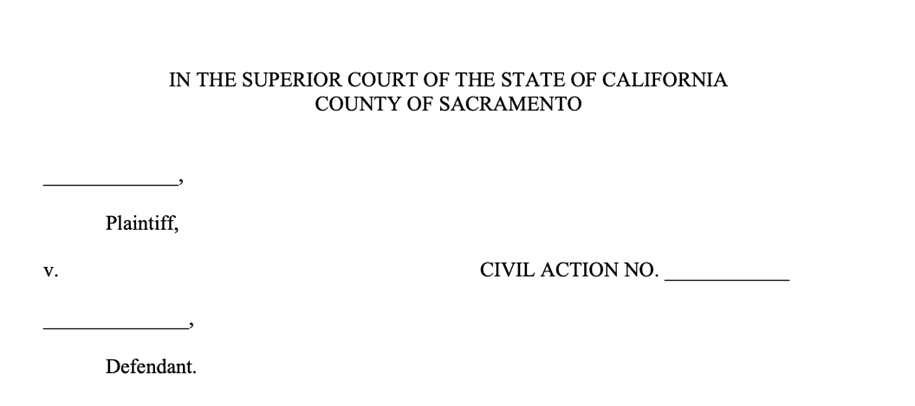
This template can be used for legal pleadings, which are documents that state a case’s facts and legal arguments. This legal pleading transcript template includes all the necessary formatting for you to get started and can be tweaked to accommodate any additional special requirements.
Can you customize these legal transcription templates?
These Microsoft Word legal transcript templates can be customized with your preferred spacing, indentation styles, letterhead, margins, and fonts. However, we recommend keeping it simple—more words in your template means more work for your typist.
Remember, you can always give verbal directions to your typist to make alterations to your template, so feel free to direct your typist within your audio recording if needed.
How the Legal Transcription Process Works
Now that you’ve seen some legal transcription examples, you may wonder how the process works when you hire a legal transcription service. Here’s what you need to know.
Human transcription vs. speech-to-text software
There are two approaches to legal transcription: human transcription and speech-to-text software.
Human transcription is when a legal transcriber listens to an audio recording of the legal proceeding and types out what they hear, sometimes verbatim. This approach is more accurate than speech-to-text software, as it doesn’t rely on algorithms to interpret the spoken word.
On the other hand, speech-to-text software is when a legal transcriber uses a program to convert the audio recording into text. However, this approach is considered less accurate than human transcription, as it can often miss words or misinterpret what was said.
How long does legal transcription take?
The length of time it takes to transcribe a legal proceeding depends on several factors, including the length of the recording, the number of speakers, and the complexity of the legal jargon. Fast legal transcription can be delivered in as little as three hours.
How much does legal transcription cost?
The cost of legal transcription varies depending on factors like:
- the length of the recording
- the number of speakers
- the complexity of the audio quality.
Some legal transcription services charge by the minute, while others charge by the word.
Legal Transcription vs. Court Reporting—What's the Difference?
Confused about the difference between a legal transcriptionist and a court stenographer? We’ve got you covered.
Stenographers cover live proceedings.
Court reporters use a stenotype machine—which looks like a typewriter—to transcribe live legal proceedings. This type of transcription is called court reporting. Court transcription costs can vary depending on many factors including, the length of the trial, multiple speakers, and turnaround time.
Court transcriptions use audio or video of an event.
Legal transcriptionists use audio or video recordings of legal proceedings to transcribe them into written documents. This type of transcription is called legal transcription.
Both require proficiency and knowledge of legal terminology and proceedings.
Each of these roles is integral to the justice system, as they provide an accurate record of legal proceedings. Therefore, legal transcriptionists and court reporters must have a strong understanding of legal jargon and court proceedings to produce professional transcriptions.
Save Time and Hassle With Legal Transcription Services
If you’re an attorney, you already know that accurate, beautifully formatted legal transcriptions are essential to your workflow. Not only do they help to ensure accuracy in legal proceedings like pleadings and depositions, but they also help legal professionals keep track of critical case details.
At SpeakWrite, we have a team of experienced legal transcriptionists ready to help you with all your transcription needs. We offer laser precision, attention to detail, fast turnaround times, and competitive pricing. To see if Speakwrite is right for you, take advantage of our free trial today.




